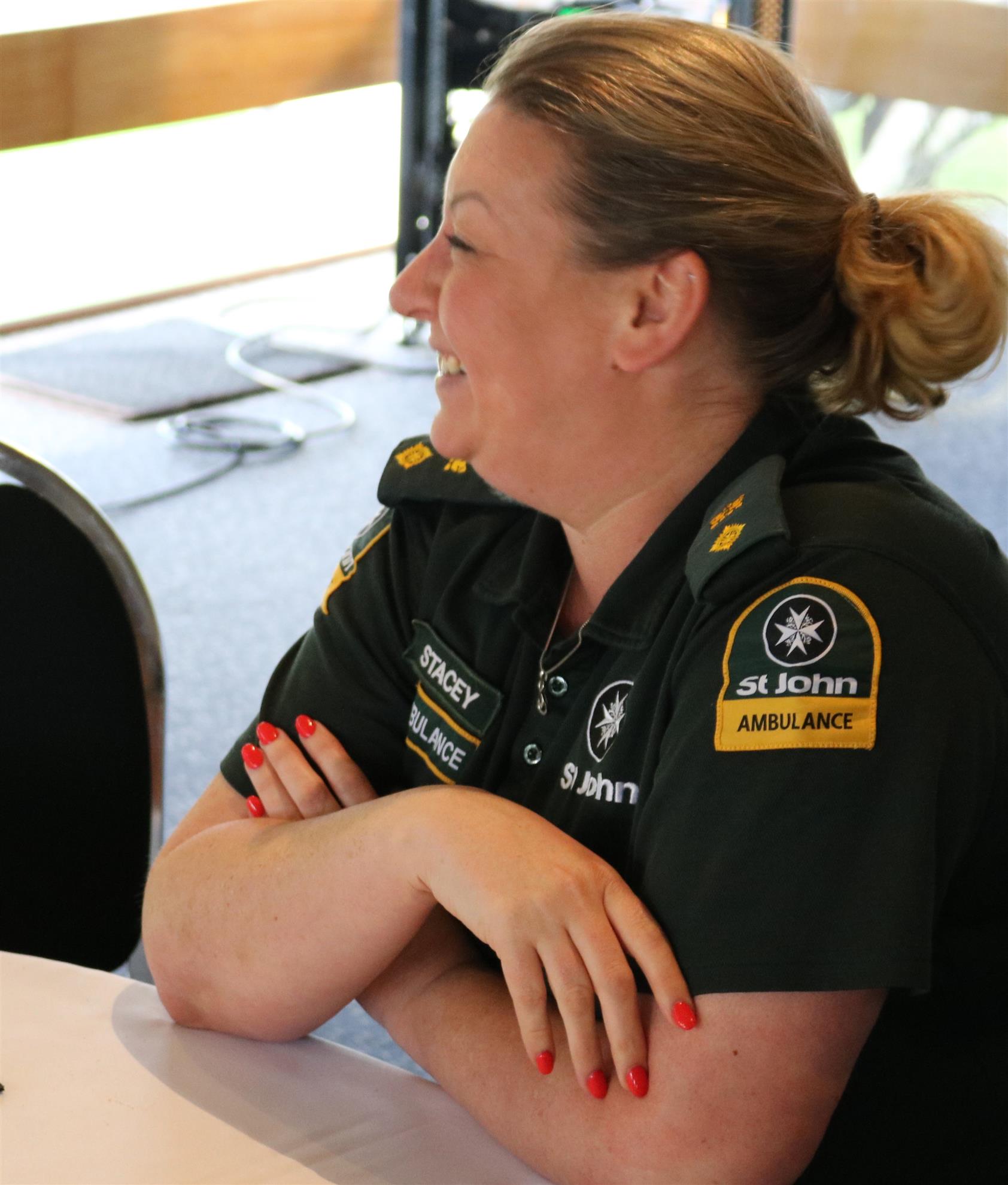 We had 27 members in attendance to hear our speaker Stacey Ayre, who is the Operations Manager for St John Clinical Communications Centre (aka managing the Ambo's). Stacey was introduced to the membership by her partner, club member Chris Herlihy. Stacey's presentation was fascinating! She told us about the processes for what happens when you make a 111 call.
We had 27 members in attendance to hear our speaker Stacey Ayre, who is the Operations Manager for St John Clinical Communications Centre (aka managing the Ambo's). Stacey was introduced to the membership by her partner, club member Chris Herlihy. Stacey's presentation was fascinating! She told us about the processes for what happens when you make a 111 call.NZ has three clinical communication centres (Auckland, Wellington and Christchurch) and handles annually an impressive 500,000 calls to the 111 number. 97% of these calls are handled within 15 seconds. Stacey advised us that the single most important piece of information needed was the exact location of the caller. She impressed upon as that if we took anything away from her presentation, it was to ensure our children and grandchildren know their home address; or the home address of where they visit frequently, for example Gran's house, or the Bach. Additionally, she urged us all to take notice of where we are (or where we are travelling to) so if an emergency occurs you can at least describe to the responder some details of where you are.
For approximately five years, St John's has had access to Emergency Caller Location Information which if necessary can triangulate where you are, but prior to this the call centre used good old fashioned maps and verbal descriptions to work this information out.
Once a call comes in, it is fitted into one of 32 different categories; with five priorities for speed at which an ambulance is sent, and additional help if needed. The most calls are for: 1) falls 2) chest pain 3) respiratory issues. They can also arrange for an interpreter to come on line, should you need to communicate in a different language.
Stacey also told us about the GoodSAM app, which is available in New Zealand and supported by St John, Wellington Free Ambulance and the National Cardiac Network. She explained that outcomes from cardiac arrest are best when the patient receives immediate CPR and defibrillation within the first five minutes. Emergency services can’t always arrive within five minutes, but it is likely that someone who knows how to perform CPR and use an AED is nearby and just unaware that they are close to a patient in cardiac arrest.
The GoodSAM app is a free app that alerts people that a patient suspected to be in cardiac arrest is nearby, allowing them to possibly save a life by providing CPR and using an AED (if available) prior to emergency services arriving. The app was developed in the United Kingdom and has been implemented by a number of ambulance services around the world.
Stacey explained that St John's is 70% Government and ACC funded, and they have received an additional one-off payment from Government to help fund the year. The rest of funding occurs by means of billing part-charges for medical callouts and charitable donations. The ambulance service costs $44 per person, per year in NZ. If you utilise an ambulance you are billed $98, but payment for this service is actually voluntary. The helicopter costs $5K per hour!
Stacey's presentation was very engaging and we would happily have listened to her for much longer. Thanks Stacey - we look forward to seeing you again.